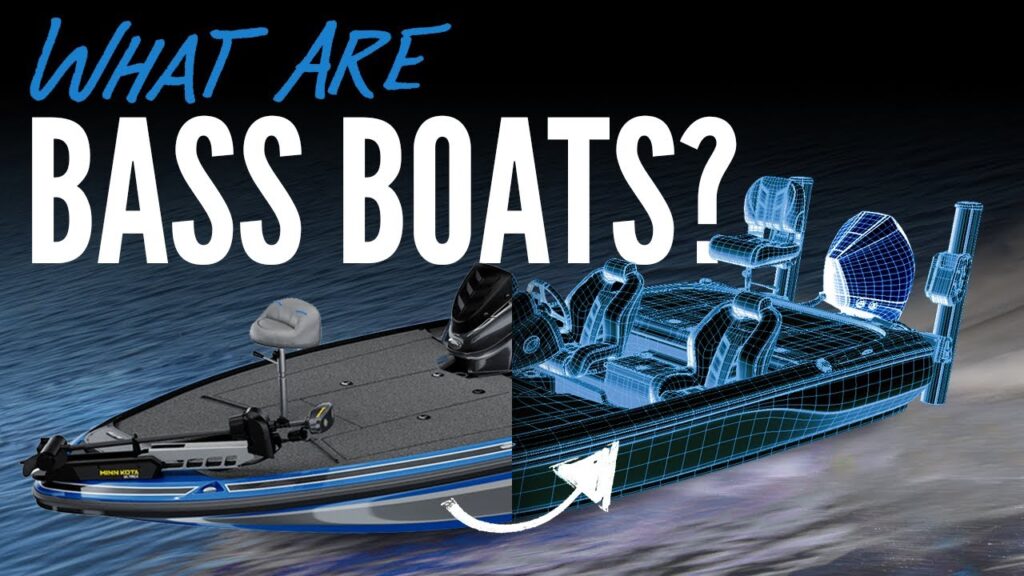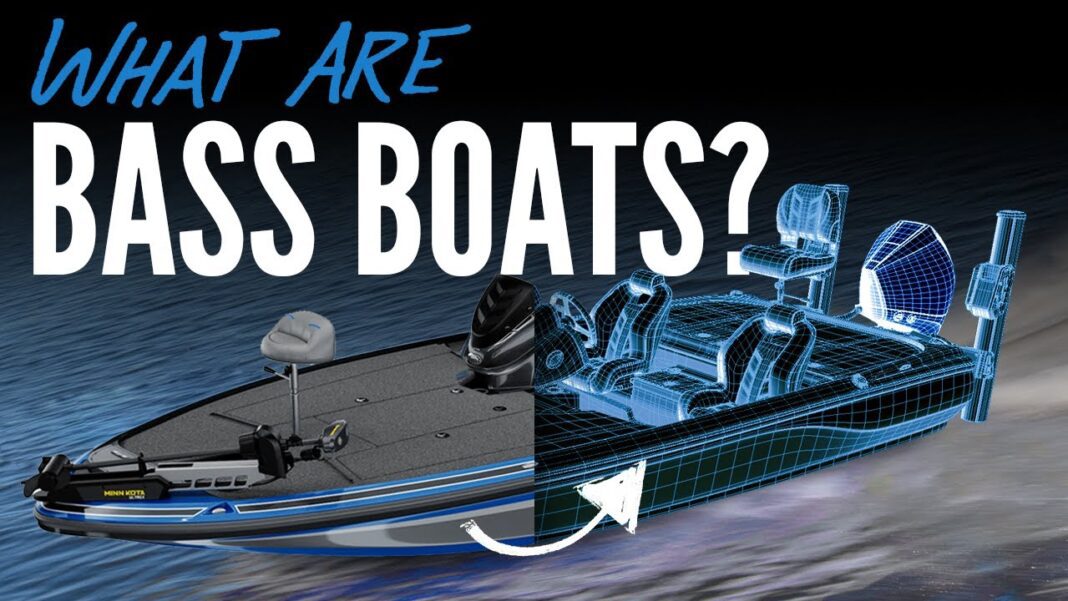Are you curious about bass boats? Maybe you’ve seen them speeding across the lake or popping up on your cousin’s Facebook feed, and you’re not quite sure what they are. Well, fret not! This video by Foothills Marine has got you covered. In this informative piece, they delve into the world of bass boats, discussing their defining features such as fiberglass vs. aluminum hulls, outboard motors, trolling motors, flat casting decks, storage compartments, shallow water anchors, active sonar devices, and livewells. Whether you’re a potential buyer or simply interested in learning more, this video is perfect for you. So join the Foothills Marine Learning Hub and gain the knowledge to navigate the world of bass boats with confidence.
Bass boats are specifically designed for bass fishing, although they can also be used to catch other types of panfish. They have sleek, low profiles that allow for swift movement through freshwater. Equipped with powerful outboard motors, these boats can reach impressive speeds, making them essential for anglers looking to cover more spots and maximize their catch. Trolling motors, fixed to the bow of the boat, facilitate precise movements and provide a quiet, stealthy approach on the water. With spacious flat casting decks and ample storage compartments, bass boats offer anglers plenty of room to maneuver and store their fishing gear. Shallow water anchors like power poles or Minn Kota Raptors/Talons discreetly anchor the boat for precision casting, while active sonar devices provide real-time underwater surroundings to aid in fish finding. Bass boats are also equipped with aerated livewells, ensuring the well-being of tournament-winning catches. Whether you’re a serious angler or simply enjoy recreational fishing, bass boats are designed to give you the best chance of success on the lake. If you have any questions or want to learn more about bass boats, make sure to leave a comment below as Foothills Marine might just make a video on your topic of interest. Happy fishing!
What Are Bass Boats?
Definition and Purpose
Bass boats are specially designed watercrafts that are specifically designed for bass fishing. These boats come equipped with features that enhance the fishing experience and provide anglers with the tools they need to reel in big catches. Bass boats are typically smaller in size, ranging from 16 to 25 feet in length, and are built for speed and maneuverability on the water. They are specifically designed to navigate shallow waters and have a flat casting deck that enables anglers to move around easily while fishing.
The purpose of a bass boat is to provide anglers with a dedicated and efficient platform for bass fishing. These boats are built to be stable, fast, and equipped with features that are crucial for a successful fishing trip. Bass boats are equipped with a range of specialized tools and features, such as trolling motors, livewells, and fish finders, which are essential for locating and catching bass.

Fiberglass vs. Aluminum Hulls
Advantages of Fiberglass Hulls
Fiberglass hulls are a popular choice among bass boat enthusiasts due to their numerous advantages. One of the main advantages of fiberglass hulls is their durability. Fiberglass boats are constructed using layers of fiberglass cloth and a resin that is hardened to form a solid and sturdy hull. This construction method results in a hull that is resistant to damage from impacts and is less prone to corrosion compared to aluminum hulls.
Another advantage of fiberglass hulls is their superior performance on the water. The smooth and sleek design of fiberglass hulls allows for better speed and maneuverability, making them ideal for navigating through shallow waters. Fiberglass hulls also offer better fuel efficiency, allowing anglers to spend more time on the water without having to refuel.
Advantages of Aluminum Hulls
While fiberglass hulls are popular among bass boat enthusiasts, aluminum hulls also have their advantages. Aluminum boats are generally more affordable compared to their fiberglass counterparts, making them a great option for anglers on a budget. These boats are also lighter in weight, which makes them easier to tow and launch.
Aluminum hulls are also known for their durability and resistance to damage. They can withstand collisions with rocks or submerged objects without sustaining significant damage. Additionally, aluminum is a non-corrosive material, making it ideal for use in saltwater environments.
One disadvantage of aluminum hulls is that they are more prone to dents and dings compared to fiberglass hulls. However, these minor damages can usually be repaired easily and at a lower cost compared to fiberglass repairs.
Outboard Motors
Power and Speed
Outboard motors are an essential component of bass boats and are responsible for propelling the boat through the water. These motors are typically attached to the transom of the boat and provide the necessary power and speed required for bass fishing.
Bass boats are equipped with high-powered outboard motors that are capable of reaching impressive speeds. The power and speed of these motors allow anglers to quickly move from one fishing spot to another, giving them the ability to cover more water and increase their chances of catching bass.
Importance in Tournament Fishing
Outboard motors play a crucial role in tournament fishing, where anglers compete against each other to catch the largest and most bass within a specified amount of time. In tournament fishing, time is of the essence, and having a powerful outboard motor can give anglers a competitive edge by allowing them to quickly navigate to productive fishing areas.
In addition to speed, outboard motors also provide anglers with the ability to control the boat’s movement and position. This is particularly important when fishing in challenging conditions or when trying to maintain a specific fishing pattern. The maneuverability offered by outboard motors allows anglers to make precise and quick adjustments to their boat’s position, increasing their chances of success in a tournament setting.
Trolling Motors
Function and Benefits
Trolling motors are another essential feature found on bass boats. These motors are usually mounted at the bow or stern of the boat and are used to provide precise control and maneuverability at slow speeds, allowing anglers to silently approach fishing spots and maintain a specific fishing position.
The primary function of trolling motors is to allow anglers to move their boat quietly and stealthily through shallow waters without spooking fish. This is especially important when bass fishing, as the noise and vibrations caused by larger outboard motors can scare away bass.
Trolling motors offer several benefits for bass anglers. Firstly, they allow anglers to fish in areas that are not accessible with larger outboard motors. This includes fishing in weed beds, around submerged structures, or in narrow, shallow waterways. Secondly, trolling motors enable anglers to maintain a slow and controlled drift, which is crucial when fishing in areas with strong currents or when using certain fishing techniques.
Flat Casting Deck
Advantages for Fishing
One of the distinctive features of bass boats is the flat casting deck located at the front of the boat. This flat and open section provides anglers with a spacious and stable platform for casting their lines and maneuvering while fishing.
The flat casting deck offers several advantages for bass fishing. Firstly, it provides anglers with a clear line of sight, allowing them to spot fish, structure, or other potential targets. This enhanced visibility is crucial for accurately casting lures and making precise presentations to entice bass bites.
Secondly, the flat surface of the casting deck allows anglers to move around freely, increasing their range of motion and flexibility. This is particularly important when bass fishing, as anglers need to make swift and accurate casts to cover different areas and increase their chances of attracting a strike from a bass.
Furthermore, the stability provided by the flat casting deck allows anglers to maintain balance even when standing and casting. This stability is especially important when fishing in rough or choppy water conditions, as it prevents anglers from losing their footing and potentially falling overboard.
In-Deck Storage
Convenient Storage Spaces
Bass boats are designed with ample in-deck storage spaces to accommodate fishing gear, personal belongings, and other essential items. These storage compartments are strategically placed throughout the boat, maximizing storage options while maintaining a clutter-free deck.
The in-deck storage compartments are typically built into the flooring of the boat and can be accessed through hatches or removable lids. These compartments are designed to be watertight and are used to store items such as fishing rods, tackle boxes, life jackets, and other necessary equipment.
Having well-designed and convenient in-deck storage spaces is essential for bass anglers, as it allows them to keep their gear organized and easily accessible. This not only saves time and reduces the risk of losing or damaging valuable equipment but also helps maintain a tidy and unobstructed deck, allowing for better maneuverability while on the water.
Shallow Water Anchors
Types of Shallow Water Anchors
Shallow water anchors, also known as power poles or anchor poles, are a valuable addition to any bass boat. These devices are used to secure the boat in place, especially in shallow water or when fishing in areas with strong currents. Shallow water anchors offer a more efficient and convenient alternative to traditional anchors and are specifically designed for bass fishing.
There are primarily two types of shallow water anchors: hydraulic and manual. Hydraulic shallow water anchors are powered by hydraulic pressure and can be controlled electronically. They are typically more expensive but offer smoother and quicker deployment, allowing anglers to anchor their boat silently and swiftly.
On the other hand, manual shallow water anchors are operated manually, requiring anglers to physically set and retrieve the anchor. Manual anchors are generally more affordable and can still provide reliable anchoring in shallow waters. However, they may require more effort and time for deployment compared to hydraulic anchors.
Benefits and Use Cases
Shallow water anchors offer several benefits for bass anglers. Firstly, they provide a secure and stable platform for fishing, allowing anglers to remain in one position without drifting. This is especially beneficial when fishing in areas with heavy cover or when using certain fishing techniques that require precise boat positioning.
Shallow water anchors also eliminate the need for traditional anchors, which can be cumbersome and time-consuming to deploy and retrieve. With shallow water anchors, anglers can anchor their boat with a simple push of a button or a pull of a lever, saving valuable time and effort while on the water.
Furthermore, shallow water anchors allow anglers to fish silently and without disturbing the surrounding environment. They eliminate the need for dropping anchor chains or noisy mechanical processes, reducing the risk of scaring away fish or disrupting the natural behavior of the fishing spot.
Active Sonar Units
Definition and Function
Active sonar units, commonly known as fish finders or depth finders, are electronic devices used by anglers to locate and identify fish, underwater structures, and the depth of the water. These units utilize sonar technology, emitting sound waves into the water and measuring the time it takes for the sound waves to bounce back after hitting an object.
The function of active sonar units is to display the information gathered from the sound waves in a graphical format, allowing anglers to interpret the data and make informed decisions while fishing. The display typically shows a visual representation of the water column, the depth of the water, and the position and movement of fish and underwater structures.
Active sonar units are an invaluable tool for bass anglers, as they provide real-time information about the underwater environment. This allows anglers to identify potential fishing hotspots, locate schools of fish, and understand the structure and composition of the bottom surface.
Fish Finding Abilities
One of the primary benefits of active sonar units is their ability to detect and locate fish. The sonar technology used in these units allows anglers to see the position, size, and movement of fish in real-time. This information is crucial for bass anglers, as it helps them determine the presence of fish in a specific area and adjust their fishing technique accordingly.
Active sonar units can also provide additional information about fish behavior and activity levels. Some advanced sonar units can measure the depth at which fish are located and even estimate their size. This allows anglers to gauge the feeding patterns of the fish and make adjustments to their presentation or lure selection.
Furthermore, sonar units can identify underwater structures such as submerged rocks, fallen trees, or underwater vegetation. This information is valuable for bass anglers, as it helps them understand the habitat preferences of bass and identify potential hiding spots or ambush points.
Livewells
Purpose and Features
Livewells are an essential feature of bass boats and are designed to keep caught fish alive and healthy until they can be released or weighed. These specialized compartments are built into the boat and typically have a recirculating water system that provides oxygen and keeps the water temperature stable.
The purpose of livewells is to ensure the survival of the caught fish. Bass boats often participate in catch-and-release tournaments where fish need to be kept alive until they can be released at the weigh-in. Livewells provide a controlled environment where the fish can recover from the stress of being caught and minimize the risk of mortality.
Livewells typically have features that promote fish health, such as adjustable aerators, water circulators, and temperature controls. These features help maintain the oxygen levels in the water and prevent fish from becoming stressed or oxygen-deprived.
Additionally, livewells are designed with the comfort and safety of the fish in mind. They have rounded corners and smooth surfaces to prevent fish from getting injured. Some livewells also have built-in compartments or dividers to separate fish and prevent them from colliding with each other.
Conclusion
Final Thoughts
Bass boats are purpose-built watercrafts designed to cater to the specific needs of bass anglers. From their specialized hulls to their powerful outboard motors and innovative features like trolling motors and shallow water anchors, bass boats provide anglers with the tools they need for a successful fishing trip.
Whether you’re a professional tournament angler or a recreational bass fishing enthusiast, investing in a bass boat can greatly enhance your fishing experience. These boats offer unparalleled speed, maneuverability, and convenience, allowing anglers to navigate through shallow waters, maintain precise positioning, and store their gear in an organized and accessible manner.
The combination of a well-designed hull, powerful outboard motor, innovative features like trolling motors and shallow water anchors, and the ability to locate fish using active sonar units make bass boats the perfect choice for serious bass anglers. So, if you want to take your bass fishing game to the next level, consider investing in a bass boat and enjoy an angling experience like no other.


